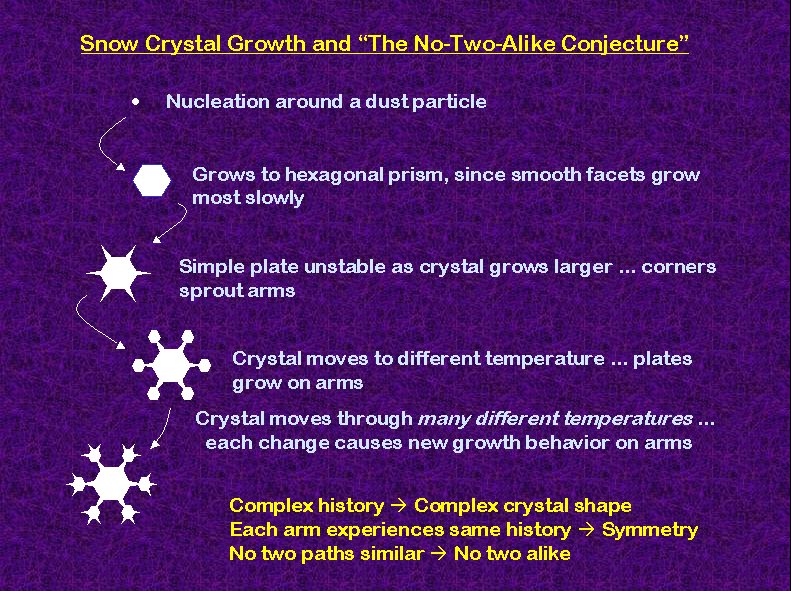
I owed this post to Noah Slater after a twitter interchange last week. I woke up from a dream about the crystallization of flakes and couldn't fathom precisely why the process is symmetric. In particular, how could one end of the flake know about the other. It turns out symmetric flakes are the exception, not the rule. There's no hidden magic and the process is a function of energy minimization and some general properties of crystallization.
A little reading shed some light on what happens up in the atmosphere. From this 2006 Scientific American question and answer, I got a glimpse into the chemistry behind snowflake formation. The bonds that water molecules form as they transition to a solid state are the result of local atmospheric changes. The hydrogen side of water attracts neighboring water molecules in a pattern which has minimum energy.
It turns out that the minimum energy or most stable crystal is hexagonal. The following diagram from Caltech's snowflake page captures the essence of snowflake formation.

The important information explaining why flakes are symmetric is due to fairly constant atmospheric changes across the surface of the flake:
Since the atmospheric conditions (e. g. temperature and humidity) are nearly constant across the small crystal, the six budding arms all grow out at roughly the same rate.
So there you have it. Many snowflakes are symmetric because of energy minimization and normalized atmospheric effects across the solid core. It turns out that asymmetric flakes are the statistically dominant type. Once again snowcrystals.com (odd redirect to a site hosted within Caltech) displays a variety of crystal shapes and sizes.